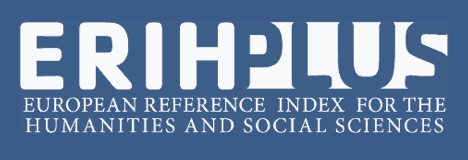Zoning of green areas circundants to Josefina Teixeira de Azevedo School, in Guanambi-BA
Abstract
The predominance of green areas in the urban environment represents an important organizing element of the space through the forestation of squares, parks, gardens, woods and reserves. Environmental zoning is a planning of space occupation in an orderly manner and according to its characteristics and potentialities, functioning as an indicator of environmental quality and quality of life. The present article instigated the students of the 9th grade, from Elementary School II to the research of scientific initiation, with the objective of knowing and zoning the green areas surrounding the school and community and its importance for the aesthetic, functional and environmental quality of the city. The results evidenced that the urban expansion led to an intense process of degradation of the vegetation areas of the urban perimeter of Guanambi, resulting from the disordered urban process without planning and zoning of these areas.
References
BRASIL. Resolução CONAMA nº 369, de 28 de março de 2006. Publicada no DOU no 61, de 29 de março de 2006, Seção 1, páginas 150 – 151.
BRASIL. Secretaria de Educação Fundamental. Parâmetros Curriculares Nacionais: Ciências Naturais/ Secretaria de Educação Fundamental. Brasília: MEC/SEF, 1997.
COIMBRA, Jose de Ávila. O outro lado do meio ambiente. São Paulo: CETESB/ASCETESB, 1985.
GUANAMBI. Plano Diretor Participativo de Guanambi. Guanambi, 2007.
GUANAMBI. Lei n.º 034/01. Código de Defesa do Meio Ambiente. Guanambi, 2001.
IBGE (Instituto Brasileiro de Geografia e Estatística). Censo demográfico 2010. Disponível em:
LIMA, Valéria. AMORIM, Margarete C. C. T. A importância das áreas verdes para a qualidade ambiental das cidades. Revista Formação, nº13, 2006, p. 139 – 165. Disponível em:
LOBODA, Carlos Roberto. Estudo das áreas verdes urbanas de Guarapuava-PR. 2003. Dissertação (Mestrado em Geografia). Universidade Estadual de Maringá, Maringá/PR.
MILANO, M.S. Avaliação e análise da arborização de ruas de Curitiba - PR. Dissertação (Mestrado em Ciências Florestais) - Universidade Federal do Paraná, Curso de Pós-Graduação em Engenharia Florestal, Curitiba, 1984. 130f.
MORERO, A.M.; SANTOS, R.F.; FIDALGO, E.C.C. Planejamento ambiental de áreas verdes: estudo de caso de Campinas-SP. Revista do Instituto Florestal, v.19, n1, p. 19-30, jun. 2007.
NASCIMENTO, Gildava A. S. Análise socioambiental das áreas verdes do espaço urbano de Guanambi-BA. In: CASTRO, J. M. L.; BOMFIM, I. A. S.; NASCIMENTO, G. A. S. Bacias hidrográficas de Guanambi: uso, ocupação e conservação - rio Carnaíba de Dentro, riacho Belém e zoneamento urbano das áreas verdes. Brasília-DF: Exlibris, 2010.
NUCCI, J.C. Qualidade ambiental e adensamento urbano: Um estudo de ecologia e Planejamento da Paisagem aplicado ao distrito de Santa Cecília (MSP).Curitiba – PR: O Autor, 2. ed., 2008.
PEREIRA, Sofia R. N. A cidade de Guanambi - BA: articulações regionais e suas implicações na configuração do espaço urbano. Colóquio Baiano Tempos, Espaços e Representações: abordagens geográficas e históricas
PIVETTA, Kathia F. L. SILVA FILHO, Demóstenes F. Arborização Urbana. UNESP/FCAV/FUNEP Jaboticabal, SP. 2002. Boletim Acadêmico Série Arborização Urbana. Disponível em
SÁNCHEZ, I. Avaliação de Impacto Ambiental: conceitos e métodos. 2. ed. São Paulo: Oficina de Textos, 2013.
VALLE, C. E. Qualidade ambiental: como ser competitivo protegendo o meio ambiente. São Paulo: Pioneira, 1995. p.117.
VIEIRA, P.B.H. Uma Visão Geográfica das Áreas Verdes de Florianópolis-SC: estudo de caso do Parque Ecológico do Córrego Grande (PECG). 2004. 109 p. Trabalho de Conclusão de Curso (Bacharelado em Geografia), Universidade Federal de Santa Catarina, Florianópolis,
2004.

This work is licensed under a Creative Commons Attribution-NonCommercial 4.0 International License.
Policy Proposal for Free Access Journals
Authors who publish in this journal agree to the following terms:
a. Authors retain the copyright and grant the journal the right of first publication, with the work simultaneously licensed under the Creative Commons Attribution License which allows the sharing of the work with acknowledgment of the authorship of the work and initial publication in this journal.
b. Authors are authorized to take additional contracts separately, for non-exclusive distribution of the version of the work published in this journal (eg publish in institutional repository or as a book chapter), with acknowledgment of authorship and initial publication in this journal.
c. Authors are allowed and encouraged to publish and distribute their work online (eg in institutional repositories or on their personal page) at any point before or during the editorial process, as this can generate productive changes, as well as increase the impact and The citation of published work (See The Effect of Free Access).





















